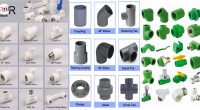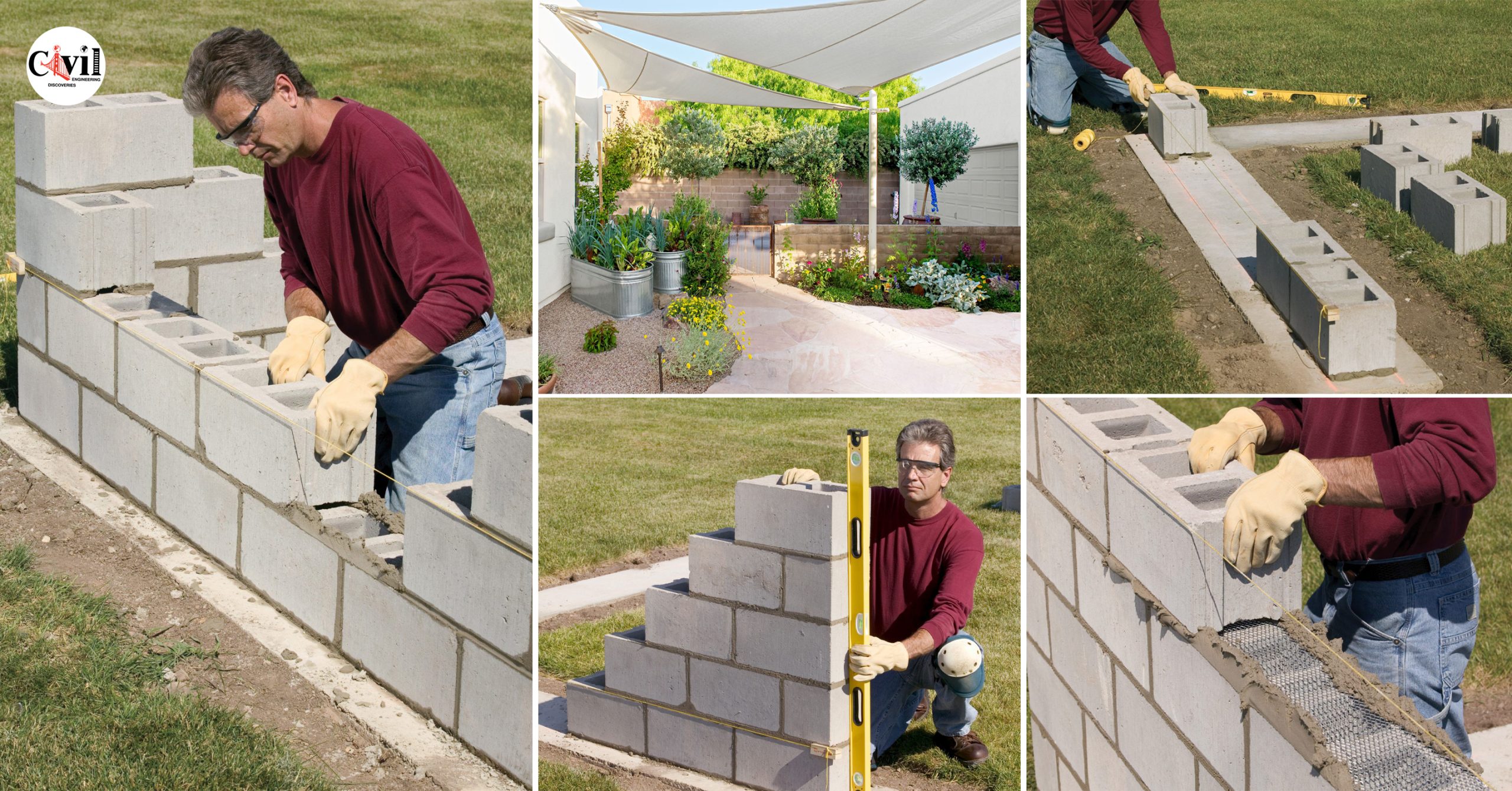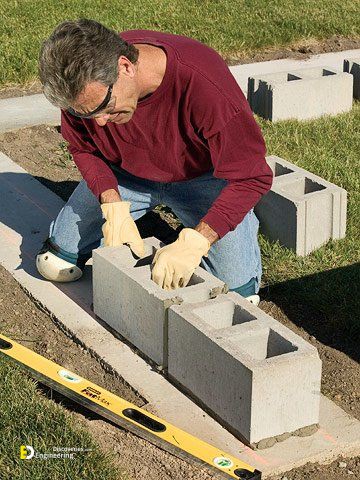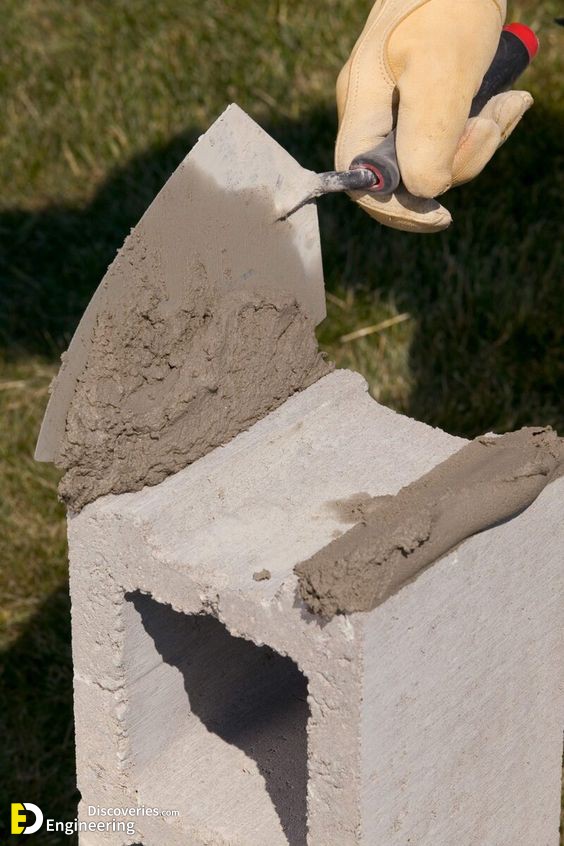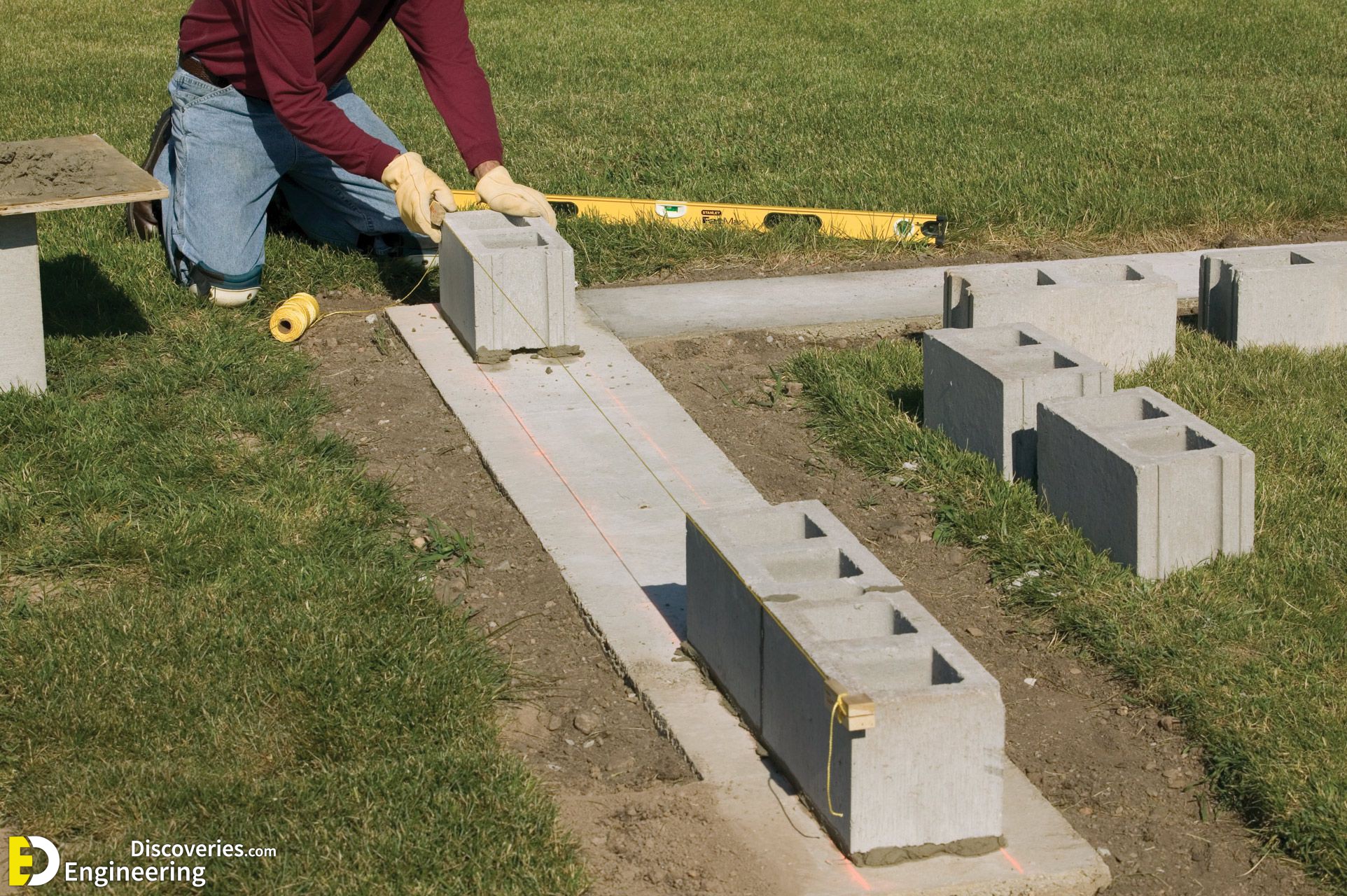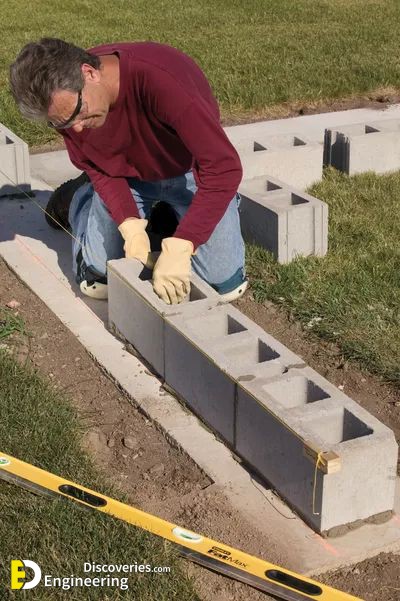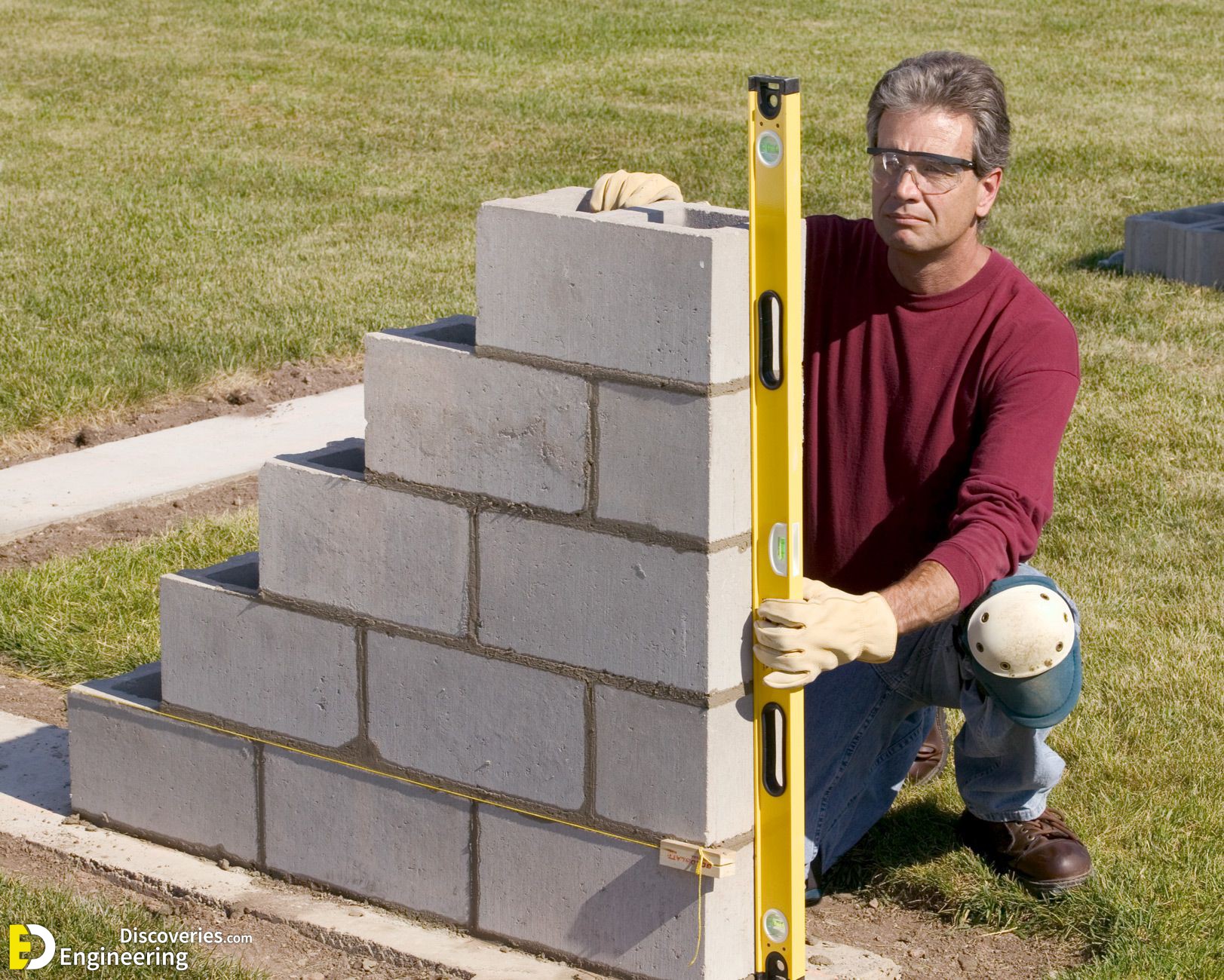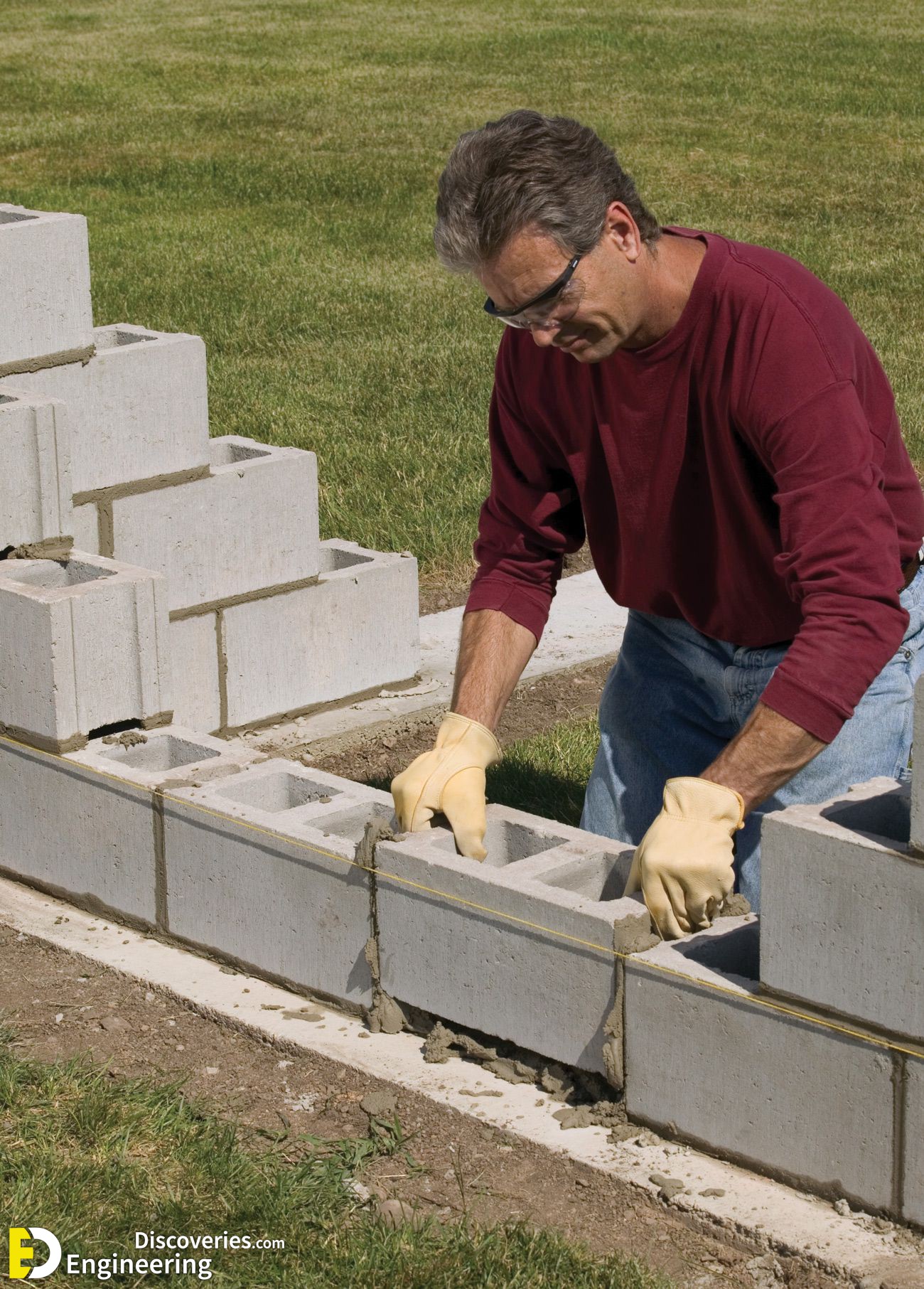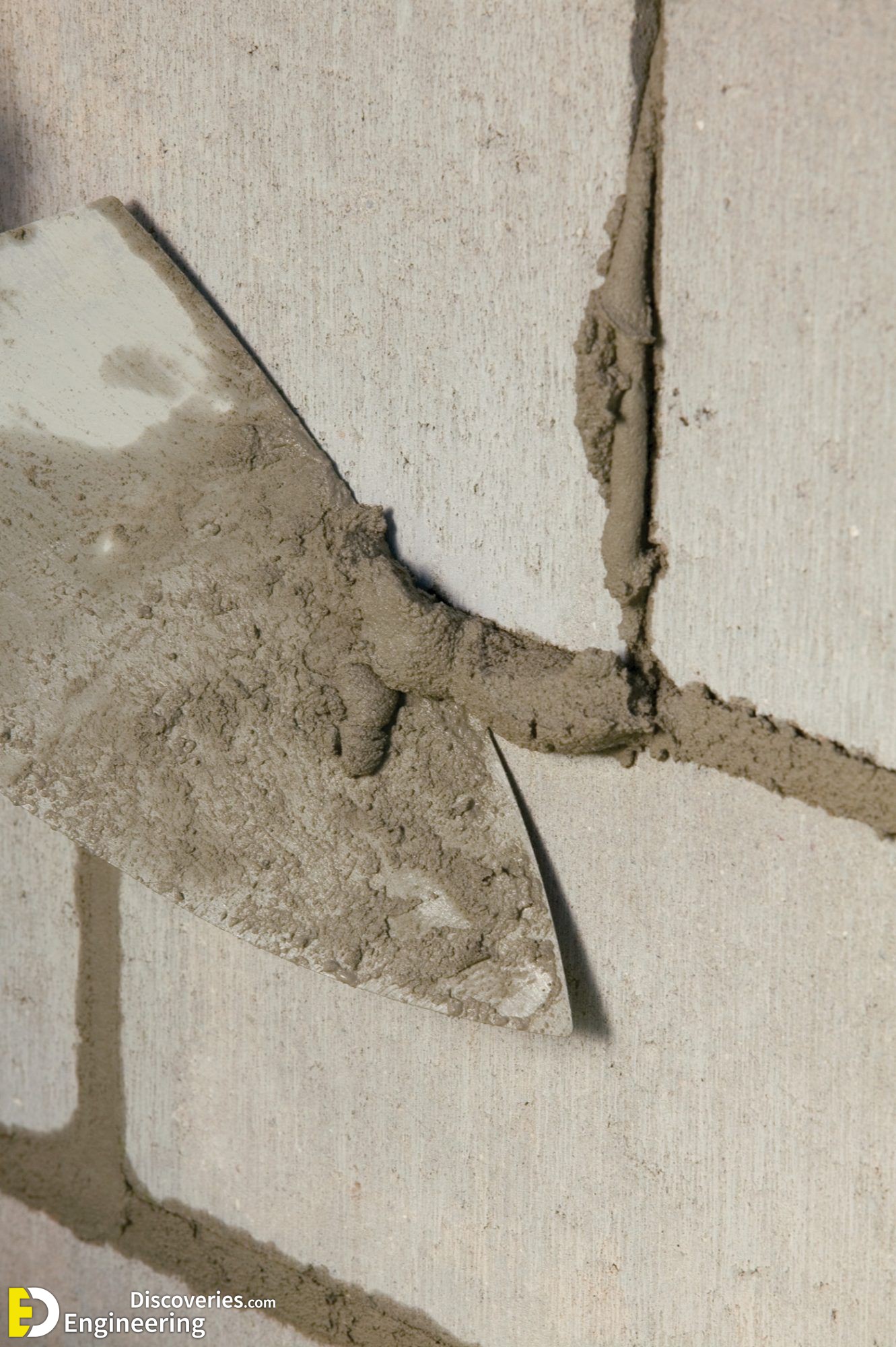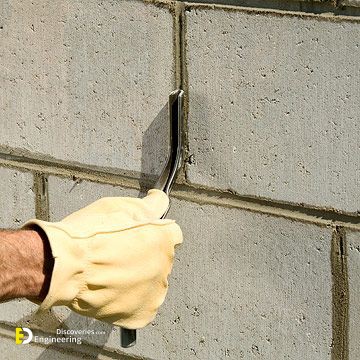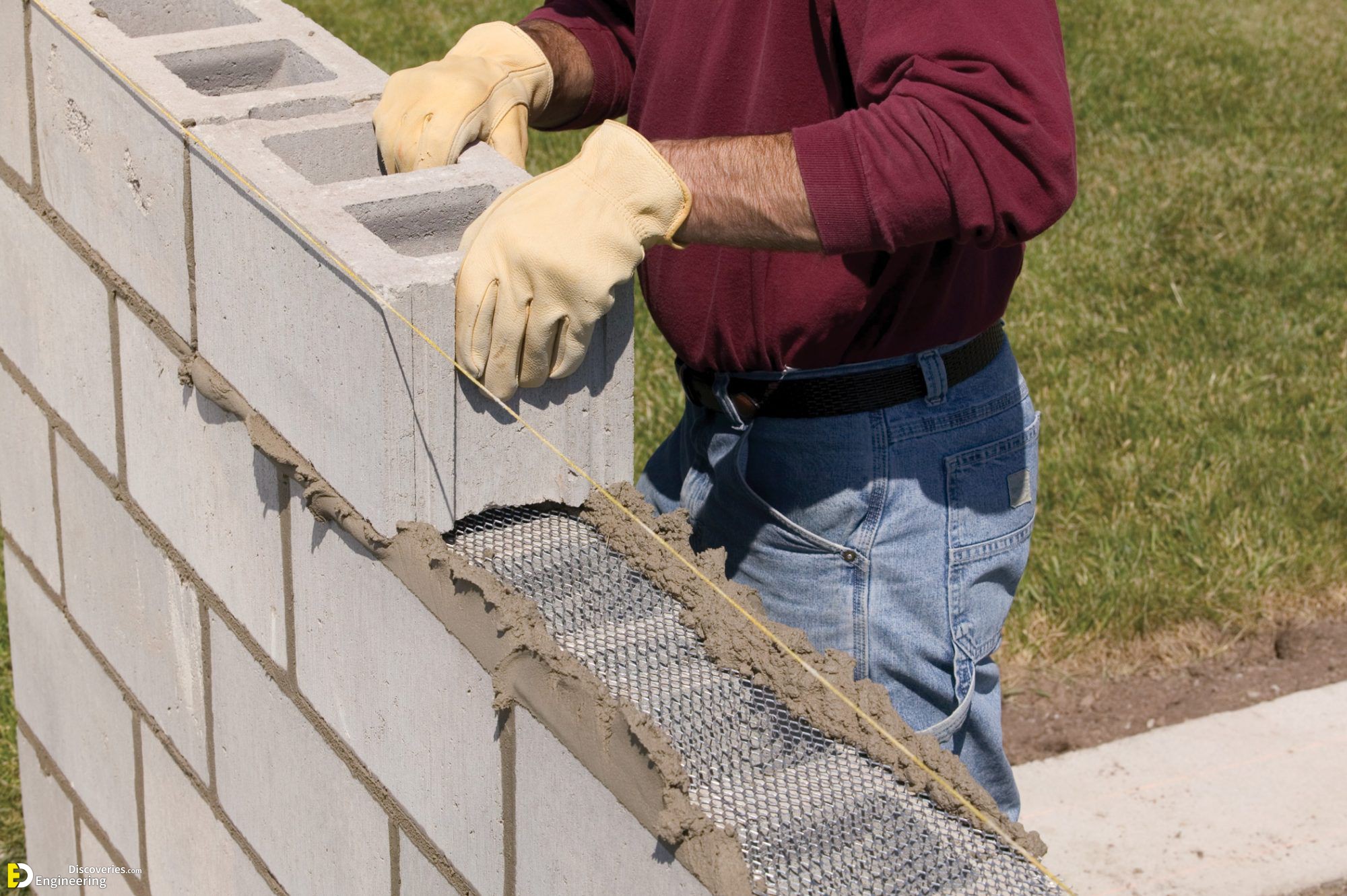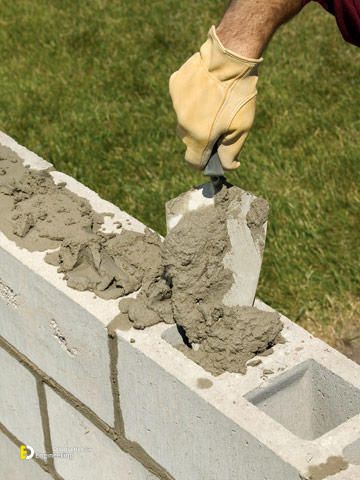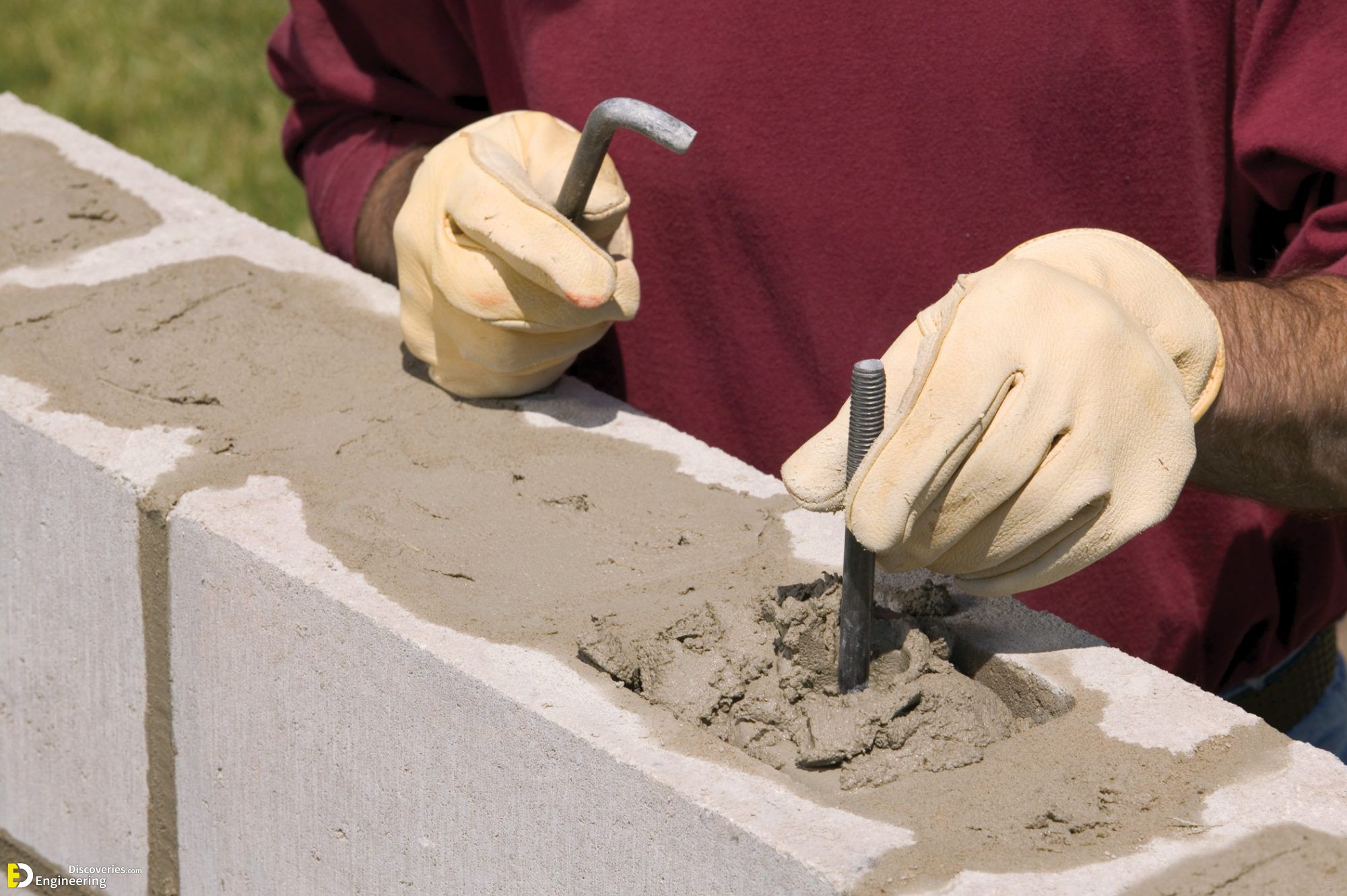Create a sense of privacy and security in your backyard with a concrete wall. This DIY weekend project using cinderblocks, mortar, and 2×4 boards, allows you to section off your outdoor living space into a private retreat. This durable, freestanding wall brings an attractive element to your yard that can zone off an outdoor patio area or add emphasis around flower beds and other landscaping. Building a concrete wall (and making it look professional) takes skill, so we’ve rounded up the best strategies and tips you need to know before you begin. Follow the full how-to instructions for a DIY cinderblock wall below and get your weekend project started.
What You’ll Need
Equipment / Tools
- 1 Tape measure
- 1 Circular saw
- 1 Brick set
- 1 Small sledgehammer
- 1 Chalkline
- 1 Pencil
- 1 Mason’s trowel
- 1 Level
- 1 Line level
- 1 Mason’s blocks
- 1 Wheelbarrow
- 1 Concave jointer
- 1 Story pole
Materials
- 1 2×4 lumber
- 1 Concrete blocks
- 1 Mortar
- 1 Metal lath
Instructions
Step 1:
Build End Leads
Before you start, lay out and pour footing. Lay out your concrete block in a dry run, spacing it with 3/8-inch plywood spacers. Mark all the edges of the course. Take up the block and spread mortar on the footing. Push the first block into the mortar until it’s 3/8 inch above the footing.
Mortar the ears (the flanges on the ends of a block) of the second block and push it against the first. To the butter, the ears first set the block securely on one end. Take up a trowel-length of mortar from your mortarboard and butter the ears with a downward swiping motion of the trowel. Then press down on the mortar on the inside edge of the ear to keep it from falling off when you set the block. If the mortar does fall off, start over with fresh mortar. Slice into the side of the mortar with the edge of the trowel to shape it into an inverted U.
Step 2:
Build End Leads to Corners
At this point, you can continue to build up the lead on one corner, then the other, or build both of them at the same time. To start the other lead, push a corner block into mortar at the other end. You can attach mason’s blocks and line from one corner to the other to help keep them straight.
Step 3:
Continue Building Base
Mortar the ears of the next block on either end and push it into place. Adjust the block’s position, so it’s level along the top of the course and from side to side. Tap the blocks into position with the end of the trowel handle. From time to time and after the mortar has been set up slightly, trim away any excess with the trowel.
Step 4:
Build Up the Wall
Build up the lead on one end of the footing by throwing mortar for the second course and starting this course with a half block. Butter the ears of the second block in this course and continue laying the block three or four courses high. Check often for level, plumb, and square. Periodically check the firmness of the mortar by pressing it with your thumb. Stop setting block and strike the joints when you can just dent it.
Step 5:
Build Up Corner
When the lead on one end is three or four courses high, build up the lead on the other end, using the same techniques. Be sure to start alternate courses with a half block. If your concrete wall turns a corner, build the corner with alternating corner blocks. Start the first leg with a whole corner block—a stretcher block with a finished face on one end. After setting the corner block, butter the ears of the adjacent block and set it. Check that the lead is plumb and level from front to back and side to side as you progress.
Step 6:
Check the Leads
Once a lead is at the correct height, lay a 4-foot level across the edges of the block. If a block extends too far out, tap it in place with the trowel handle. If a block falls short of the line, don’t adjust it or remove it. Instead, make up the difference across the rest of the course by making some of the joints thicker.
Step 7:
Build Between the Leads
Stretch a line with mason’s blocks between the leads. Set the line 1/16 inch from the face of the block and level with the top of the first course. Lay a mortar bed on the footing between the leads, and set the block, working from both sides to the center.
Editor’s tip: Concrete block doesn’t require gentle treatment. Grab the block by the sides of the webs and, looking down into the cores, push it into place, lining it up with the others. Don’t slide the block into place—you’ll displace the mortar and create an uneven joint.
Step 8:
Set Closure Block
When you reach the center of the wall and have space for only one more block (the closure block), set that block in the space without mortar. It should fit with enough room for 3/8-inch joints. If there’s not enough room, trim the block with a cold chisel or circular saw and a masonry blade. Mortar the ears of the block on both sides and push it into place.
Step 9:
Strengthen with Pilasters (Optional)
If you’re building a long wall, local building codes may require you to strengthen it by constructing core-filled pilasters at intervals along its length. The pilasters are made by interrupting the course of the wall with two perpendicular blocks set side by side, alternating with a full block every other course. In order for the pilasters to receive proper support, you must pour your footing to support them, inserting lengths of rebar into the footing where the cores of the pilaster will be.
Once you have completed the wall to its finished height, fill the pilaster cores with mortar mixed slightly wetter than joint mortar so it pours more easily. You will also have to install rebar in the footing of a retaining wall and core-fill the wall for added strength.
Step 10:
Move Up
Continue building the leads by moving the mason’s blocks up to the next course and properly aligning them. Throw mortar for the following course between the leads, butter the ears of each block, and set them, working from the leads to the center and keeping the block a consistent distance from the mason’s line.
You don’t need to throw mortar on the center web. That makes the concrete block more difficult to level and plumb and wastes mortar. The only exception is when you’re placing metal reinforcement on the corners of a concrete wall. In this case, butter all the web and embed metal lath into the mortar. You can also cut and bend the reinforcement bar to a right angle and push it into the mortar. Then smooth the mortar over the reinforcement.
Step 11:
Remove Extra Mortar
Remove excess mortar from the block as you go. Let the mortar set up slightly. Then slice off the excess with the edge of the trowel.
Step 12:
Stop laying the block and check the mortar by pressing your thumb into a joint from time to time. The mortar is ready for striking when it will dent just enough to hold a slight thumbprint. Run a concave striking tool along the joints, compressing them and smoothing them. Strike the horizontal joints first, then the vertical joints, to allow water to run freely down the wall. Scrape off excess mortar and strike the joints again.
Step 13:
Lay Metal Lath
Some wall designs call for filling the cores of the top course with mortar (called core-filling). If you’re going to core-fill the top course (for J-bolts, for example), cut a length of metal lath to the width of the block and lay it on top of the next-to-last course. The metal lath will keep the mortar from falling through the blocks to the bottom. Then throw mortar and set the top course.
Step 14:
Fill With Mortar
Scoop mortar from your mortar box into a bucket to carry it with you as you work across the wall. Scrape mortar from the bucket into the cores, overfilling them slightly. Poke the trowel up and down in the cores a couple of times to ensure the mortar is thoroughly distributed.
Step 15:
Attach Sill or Cap
If you plan to attach a 2x sill or cap to the wall, embed J-bolts into the mortar. Center a bolt in the core and push it down until about 2 inches remains above the cores (about 1 1/2 inches if you’re going to counterbore your 2x cap for the J-bolt nuts). Use a layout square to make sure they’re vertical.
Smooth Mortar
Smooth the mortar in each core with a small trowel, leveling it to the web of the block. Take care not to disturb the J-bolt. Let the mortar set up before you install the sill or cap.
Step 17:
Top Off Your Concrete Block Wall
Line up the lumber with the J-bolts and mark the 2x so you can drill holes that correspond to the bolts. Drill the holes and counterbore them, but wait until the concrete has cured before attaching the board.
If you don’t top your wall with lumber, cap blocks are made specifically to hide the top cores and provide a finished look. If you’re laying cap blocks, throw mortar on the top edges of the last course and lay the first cap block in the corner. Butter the ends of the remaining block and set them centered on the wall, tapping their level.
Plain mortar makes an acceptable cap for a block wall, but it requires some support. Lay metal lath into the mortar before laying the last course of blocks. Lay the last course, then core-fill it, overfilling by about 1/2 inch. Level the mortar across the webs, then round its edges to let water drain off more easily.
Click Here To See Incredible Concrete Blocks laying In Construction

